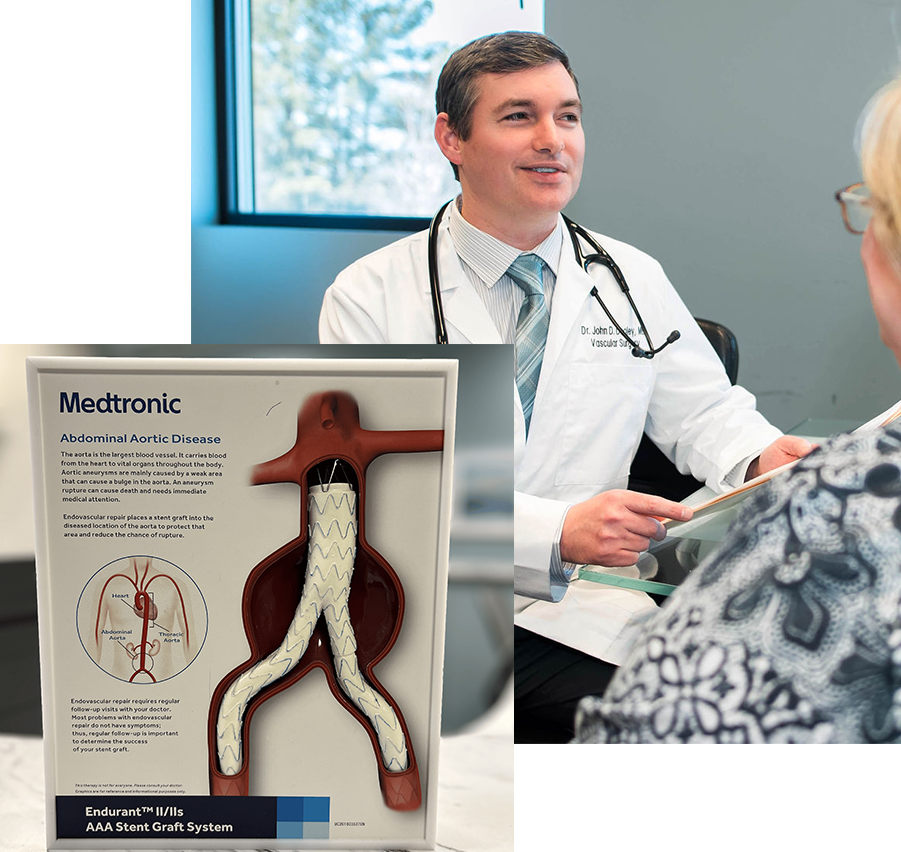Expert Care for Abdominal Aortic Aneurysms
Our board-certified vascular surgeons provide advanced diagnosis and treatment to protect your health and prevent life-threatening complications.
What Is an Aortic Aneurysm?
An abdominal aortic aneurysm (AAA) occurs when the walls of the aorta—the body's largest artery—become weakened, causing the artery to bulge or expand. Left untreated, this condition can lead to a rupture and life-threatening hemorrhage.
Early detection and expert care are essential to managing the risks and protecting your health.
Risk Factors Include:
- Atherosclerosis
- Chronic hypertension
- Smoking
- Family history
- High blood pressure
- Inherited conditions (Marfan’s Syndrome, Ehlers-Danlos Syndrome)


Signs and Symptoms of Abdominal Aortic Aneurysms
While many aneurysms develop without noticeable symptoms, those at higher risk should seek screening and evaluation. In some cases, patients may experience:
- A pulsating lump or mass in the abdomen.
- Pain in the back or side, caused by the aneurysm pressing on nearby nerves.
Most AAA cases are discovered during routine medical exams, ultrasounds, or diagnostic imaging like X-rays, MRIs, or CT scans conducted for unrelated reasons. Regular screenings can save lives by detecting aneurysms early.
Personalized Care for Every Stage of Aneurysm Management
The treatment for an abdominal aortic aneurysm depends on its size, location, and severity. At Atlanta Vascular Specialists, we offer:
Monitoring and Screening:
For smaller aneurysms, we perform regular ultrasounds and CT scans to track growth and assess risks.
Minimally Invasive Repairs:
For larger or more advanced cases, our surgeons specialize in endovascular stent-graft repair, a procedure designed to stabilize the aneurysm and minimize recovery time.
With decades of experience and access to the latest technology, our team provides the highest level of care to protect your health and future.
Take Control of Your Vascular Health
Abdominal aortic aneurysms can be life-threatening, but early detection and expert care can make all the difference. At Atlanta Vascular Specialists, we’re here to guide you every step of the way with advanced treatments and compassionate care.

